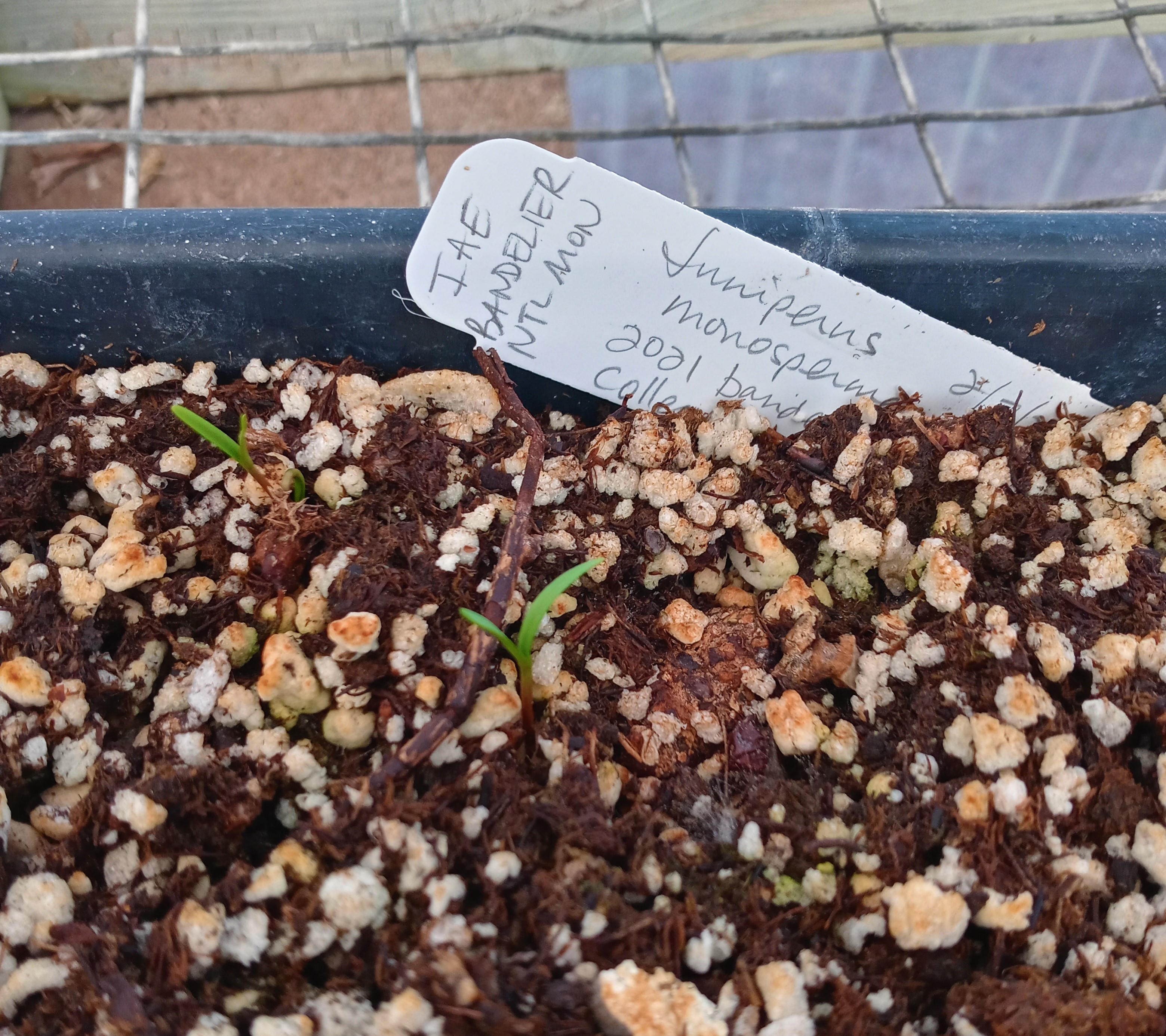
Searching for Scat
By Taylor Cain
March 2022
In the fall of 2021, IAE’s Southwest office coordinated a field crew tasked with the collection of native seeds for a unique project, through even more unique means. This seed collection effort took place within Bandelier National Monument. Bandelier is a small monument in Northern New Mexico managed by the National Park Service, and is most famed for what remains of an Ancestral Puebloan civilization within Frijoles Canyon. Bandelier is currently in the process of expanding two parking lots within the monument, and asked IAE to collect a variety of native seeds that will be used to revegetate areas of disturbance created by this construction. The list of target species included grasses, wildflowers, shrubs, and tree species. Seed was collected by-hand using traditional techniques including stripping or plucking seeds from the plant, or clipping entire flowerheads. One of Bandelier’s most prevalent tree species however, requires something a little different: this is one-seed juniper (Juniperus monosperma).
The fleshy female cones (or “berries” as they’re often referred) of Juniperus species contain seeds that have a thick seed coat surrounding a dormant embryo. Seed dormancy is a trait that many wild, uncultivated plants have adapted, which essentially enables them to control the timing of germination. In climates with strong seasonality, many native seeds must experience a period of moist cold in order to germinate, which in nature is typically accomplished over the winter, so that they are ready to germinate in the spring. Other species also require physical scarification of the seed coat which often occurs in nature through events like being tumbled through sand. When germinating seed from uncultivated plants in a nursery setting, this process can often be mimicked through methods like rubbing the seeds with sandpaper or placing them in a refrigerator for a period of time. For Juniperus however, there appears to be no substitute for the natural process, which happens to be passing through the digestive tract of animals! Juniper seeds are consumed by a variety of wildlife such as coyotes, bears, and many species of birds. Those seeds pass through their digestive system where their stomach acids break down that thick seed coat and eventually the seeds end up in…you guessed it! Their scat. This digestive journey dramatically increases the germination rate of Juniperus seeds.
Toward the end of their collection season, the Bandelier seed crew set out on the trail each day with their heads down, staring intently at the ground underfoot in search of lumpy brown morsels to scoop up with gloved hands, and deposit into ziplock bags. At each pile of scat, the crew would huddle around, dissect a portion of it with a stick to confirm the presence of juniper seeds, and carefully place it in a bag for safe and sanitary transport back to the office. The scat collections were then delivered to the Santa Ana Native Plant Nursery, just north of Albuquerque. These collections were placed in a refrigerator for 3 months to aid in breaking seed dormancy before seeding in the greenhouse. The seeds were planted in early February, and just began to sprout during the time of this writing!
Humans have undoubtedly made great achievements in our pursuit of modifying the flora around us to achieve our horticultural goals, whether that be for food production or restoration. This novel approach to native seed collection however, serves as a humble reminder that in some cases it is best to let nature do the work, and to trust its tried and true processes. So, next time you are out for a hike and spot a pile of scat, take a closer look! You might be surprised by what you find.
Thanks to Bandelier National Monument (NPS) for funding this project and thanks to the Pueblo of Santa Ana Native Plant Nursery for supporting the nursery production needs.
Restoration
Research
Education
Get Involved
Contact
Main Office:
4950 SW Hout Street
Corvallis, OR 97333-9598
541-753-3099
[email protected]
Southwest Office:
1202 Parkway Dr. Suite B
Santa Fe, NM 87507
(505) 490-4910
[email protected]
© 2024 Institute for Applied Ecology | Privacy Policy


